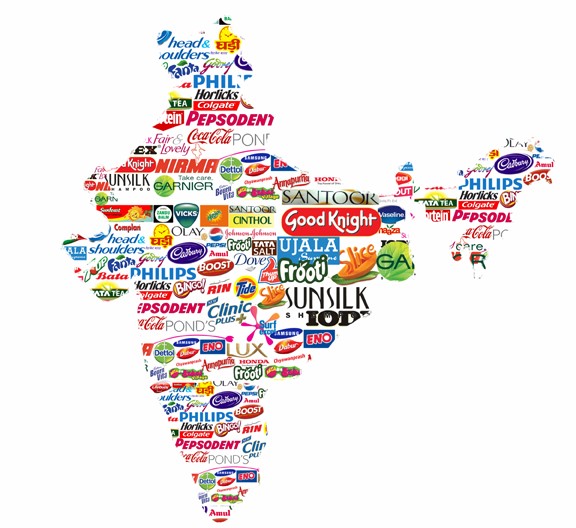There are very few home-grown brands in India beyond the Start-Up ecosystem that have emerged in the last decade.
The Start-Up ecosystem typically fosters brands built on a foundation of marketing investments, heavy ad campaigns, increased media spending, high visibility, and strong brand recall. Examples include Cred, Blink It, WOW, and Mama Earth.
Despite being one of the world’s largest consumers of electronic products, India lacks a prominent “Made in Bharat” mobile brand, TV brand, or refrigerator brand. Most popular brands like Boat and Noise are white-labeled Chinese products. Apple, while a US brand, assembles its products in India through a Taiwanese contractor.
Indian brands from the past like Texla, Weston, Salora, and BPL have faded away. Similarly, Indian mobile brands like Intex and Micromax were essentially white-labeled Chinese imports. None of these companies achieved true “Made in Bharat” status.
Even established Indian tech giants like HCL, Infosys, Wipro, TCS, and Zoho rarely engage in traditional advertising. Their brand awareness remains limited primarily to employees and the market share.
India boasts some well-known global brands, including Hero, Bajaj, Mahindra, and Tata in the automotive sector. Additionally, Haldiram’s and Sarvana Bhavan have found success as global Indian food brands, though not on the same scale as McDonald’s. Fabindia is a recognized global Indian fashion brand, and Himalaya is a respected global Ayurveda brand.
RJ Corp attempted to create a global competitor with Vango, a South Indian QSR chain, but its reach is largely limited to Indian airports.
Why do Companies from Bharat Shy away from Building a Global brand, and networks on Scale?
Some of the reasons could be:
- India is a Big Enough Market.
- Brand Building is a costly affair with Consistent investments, and Indian companies are yet not ready.
- We don’t believe is Brand.
- Indians help Global brands scale up, but not do it for themselves
Indian consumers often readily embrace established global brands like Facebook, Sketchers, Oppo, Vivo, and Xiaomi, while not extending the same support to domestic brands. So why do Brands from Bharat Shy Away from Building Global Brands?
India has transitioned beyond the “Made in India = Poor Quality” stereotype. The country is a major manufacturing hub for global brands, assembling products for export. This demonstrates India’s capability to produce high-quality goods.
Not One Bharat Shoe brand is Global
Not One Bharat Electronic brand is a Global
Not One Bharat Pharma Brand, Ayurveda yes.
Do we have Potential? Of Course.
Are we willing to Invest in building brands with the Aura, Class, attractiveness, connect of a Global brand? Doubtful.
Sparx, INTEX, LAVA.
Why Indian Brands have failed to conquer American and European minds and the Chinese succeeded? Before that Japanese?
Is it Tech, Investment, Aggression, or Design? What?
We spoke to some of the Probables but here is what we found.
They are happy with profits.
Many Indian companies view brand building as a cost rather than a strategic investment. They prioritize short-term profits and volume over long-term brand development.
They are happy to be in the VFM space, and play volumes game.
Design, Communication, and Investing in Building a Design-led, Global product is not the forte of any new Indian Company. It took decades, for Generation Shifts to Mahindra and TATA to reach there. These MSME, few 100 or 1000 Crore companies don’t have that mindset or Vision Yet.
Many Indian companies prioritize producing a large variety of products with small profit margins, neglecting to invest in design and create a single, high-quality, globally competitive product. Contract manufacturing has become their preferred business model.
Brands from Bharat need to Invest Heavily in Product/Services Design. India’s success in the automobile sector demonstrates the power of collaboration. Brands like Tata Motors (Jaguar Land Rover), Maruti Suzuki, Mahindra (SsangYong), Hero Honda, Bajaj Kawasaki, and BharatBenz have all benefited from strategic partnerships with global players. Why are such collaborations not happening in the post-pandemic world for global markets?
With the recent disruptions in the global market, one wonders why Indian mobile brands haven’t stepped up to fill the void left by some Chinese companies. Why are Indian brands hesitant to step outside their comfort zones and compete on a global stage?
Can they?
Do they need to?
The marketing landscape has undergone a significant shift. Today, a world-class product can be created, designed, and marketed effectively from anywhere in the world. With aggressive marketing, global availability, and proper regulatory approvals, a product can achieve global success.
Here’s a potential roadmap for Indian brands to consider:
- Target Indian Globetrotters: Begin by marketing your product to Indian consumers who travel internationally.
- Attract International Business Communities: Target employees of Korean, Chinese, German, US, and Japanese companies operating in India.
- Leverage Digital Marketing: Utilize targeted digital marketing strategies to reach select global markets.

